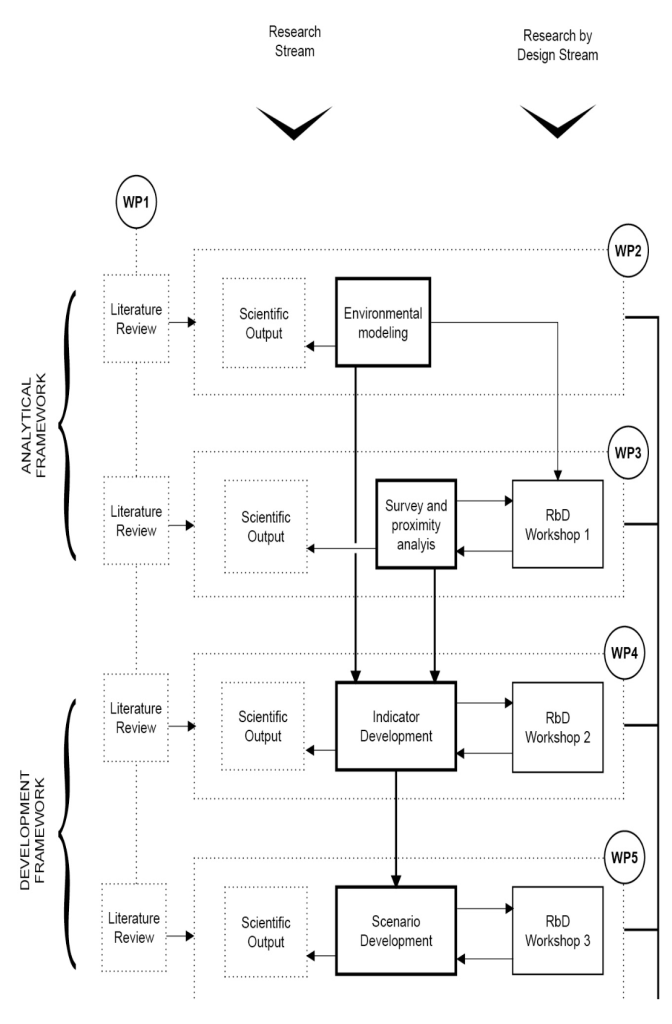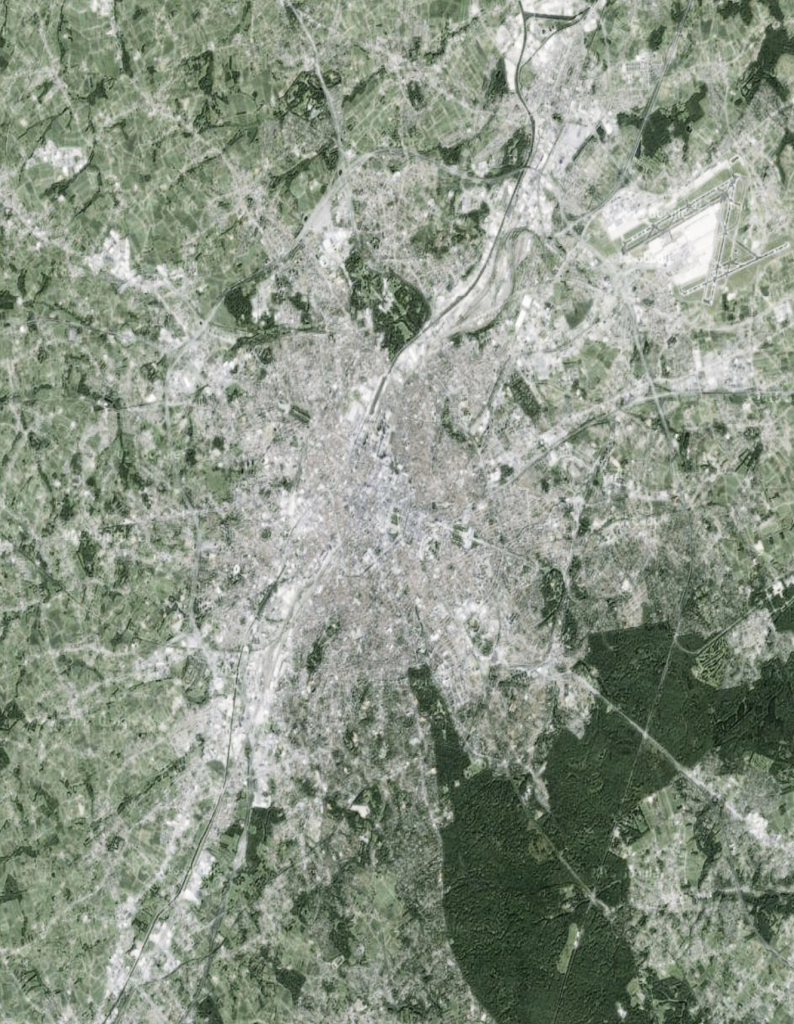Philip Stessens
PhD Student
Collaboration: Ahmed Z. Khan (ULB), Frank Canters (VUB), Marijke Huysmans (VUB)
Keywords: Urban Ecology, Urban Ecosystem Services, Integrated Ecological Design, Climate Change Adaptation, Multifunctional Green Space, Urban Hydrology, Urban Heat Island Effect, Remote Sensing, Spatial Modelling, GIS-based Indicators, Research-by-Design, Urban Design & Planning
Brussels, like many other European cities, is facing numerous challenges at the dawn of the 21st century. One of the main challenges of the Brussels-Capital Region (BCR) will be the improvement of urban environmental quality while dealing with a predicted demographic growth, increase of heat waves (aggravated by the urban heat island effect) and increase of periodic drought and flood risk. Currently, policy makers, planners and urban designers are not sufficiently equipped with the tools, techniques and methods required to optimally address these interconnected challenges in an interdisciplinary manner. This research project wishes to address the capacity of ecosystem services as one of the core concepts for the sustainable development of the BCR through developing an ecological approach for urban design and planning. By linking the more bio-climatologically oriented urban ecosystems research with urban design and planning through an interdisciplinary approach, the main objective is to develop an analytical framework for ‘ecosystem service assessment’ and derive a set of tools needed for working towards an ecologically resilient region. With these intentions, the research project focuses on green spaces in the BCR and their services on an intra-urban level related to the mitigation of the described challenges, and also takes into account their experiential (social) value and psychological attributes pertaining to the well-being of the urban citizens.
From a methodological perspective, the research project comprises GIS-based environmental modelling (to describe heat flux and water retention behaviour) and survey and proximity analysis (for accessibility and experiential/cultural issues) through which a set of spatially explicit and temporally dynamic indicators will be derived for scenarios testing. This stream of research will be conducted through remote sensing and spatial modelling in a GIS environment, using state of the art approaches, combined with using the WetSpass model for estimating the different components of the urban water balance, with particular emphasis on rain water retention efficiency. Parallel to this research stream, a research-by-design stream will be maintained through organising a series of workshops with key stakeholders for the validation of the analysis and indicators, and co-produce further knowledge on the ecosystem service and urban design interaction, and shared scenarios development. Thus design will be used as not only an integrative and interdisciplinary component of the research, but also as a trans-disciplinary mode of research involving stakeholder participation and co-production.

The co-produced framework and indicators will allow to depict spatial inequalities in relation to ecosystem services, to improve our knowledge of the impact of urban form and urban composition on urban ecosystem characteristics and services, and to valorise and improve that knowledge while formulating differentiated urban planning and design responses for unfolding a resilient and ecologically sustainable urban environmental quality in the BCR.
It is hoped that the interdisciplinary diagnostic apparatus and the analytical capacity developed in this work will also prove useful on the longer term, for impact analysis of alternative policy and design scenarios, including the possibility of transforming it into an interactive tool for policy support.

This research is funded by: Prospective Research for Brussels grant – INNOViris
Selected Publications:
[1] S.T.A. Pickett, M.L. Cadenasso, Brian McGrath (2013). Resilience in Ecology and Urban Design: Linking Theory and Practice for Sustainable Cities (Future City). Springer; 2013 edition
[2] Khan, Ahmed Z., Allacker, K. and Vandevyvere, H (2013), “Design for the ecological age: Rethinking the role of sustainability in architectural education,” in: Journal of Architectural Education 66(2) 175-185.
[3] Lappé, F.M. (2009). Questions to ask strategies to save our planet. Solutions 1, 34-35
[4] Burkhard, B., Petrosillo, I., & Costanza., R. (2010). Ecosystem services – Bridging ecology, economy and social sciences. Ecological Complexity, 7, 257-259.
[5] Bastian, O., Haase, D. & Grunewald, K. (2011). Ecosystem properties, potentials and services – the EPPS conceptual framework and an urban application example. Ecological Indicators, 21, 7-16.
[6] Wilby, R. L., & Perry, G. L. W. (2006). Climate change, biodiversity and the urban environment: a critical review based on London, UK. Progress in Physical Geography 30(1), 73-98. DOI:10.1191/0309133306pp470ra
[7] De Bondt, K. & Claeys, Ph. (2010). Flooding Risk in Brussels, Water retention capacity of geological units. (in Marleen Wynants (ed.), We can change the weather, 100 cases of changeability; Crosstalks, Brussels: VUB press.)
[8] Kazmierczak, A., & Carter, J. (2010). Adaptation to climate change using green and blue infrastructure: A database of case studies. Manchester: University of Manchester. Available at: http://grabs-eu.org/casestudies.php. Keskitalo, C. (2010 )
[9] Bolund, P, Hunhammar, S. (1999). Ecosystem services in urban areas. Ecological Economics 29(2), 293-301
[10] Masson, V., Lion, Y., Peter, A., Pigeon, G., Buyck, J. & Brun, E. (2012). “Grand Paris”: regional landscape change to adapt city to climate warming. Climatic Change 117(4), 769-782. DOI: 10.1007/s10584-012-0579-1